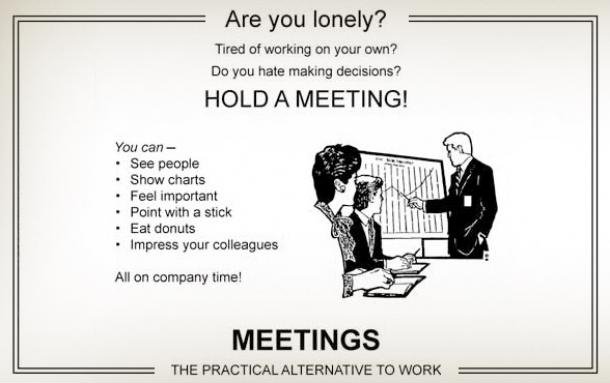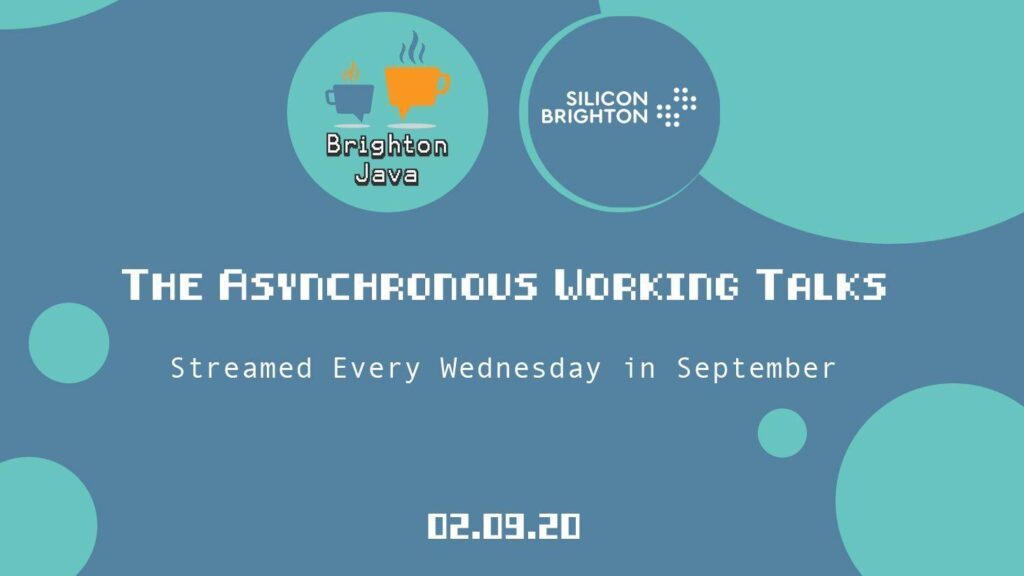I love this spoof advert, which I first saw back when you had to share your memes by email:

We are social animals, so meetings are an important part of our work. But they can also get in the way of work. I’ve known too many people who claimed to be more effective when they worked from home, or who worked early or late to ‘get things done’. Given how important meetings are, it’s worth spending time getting them right. Running effective meetings is a skill, and too often people don’t bother.
For me the following is essential for any meeting:
- A clear summary of the meeting, so people can quickly work out if they need to attend (particularly if they see it on a shared calendar).
- A goal – what do we want to get out of this meeting?
- An agenda – what specific points are we discussing?
- Pre-requisites – what should people read or do to prepare for the session?
- Follow-up – after the meeting, a clear summary should be produced and preferably posted to a shared wiki. There should also be a list of action items, with each assigned to a specific individual.
A lot of work is needed around a meeting, but this is worth doing because meetings are expensive. Sometimes I think there should be a clock in the room, showing how much it has cost so far. A one hour meeting for seven people is taking up the equivalent of a person’s work for a day.
In his most recent video for Brigton Java/Silicon Brighton, James Stanier talked about running effective remote meetings:
James provides a great primer on meetings, as well as some useful points that I’d not considered before:
- Recurring meetings should have a rolling agenda in a shared document which anyone can add to during the week.
- The best meeting is one that does not need to happen, where people can resolve the issues without the need for synchronous time.
- James also suggests ‘silent meetings’, allowing time for people to read relevant documents at the start of a meeting.
- As well as a chair and a scribe, larger meetings can also use ‘spotters’ to identify people who have not been able to speak or to contribute.
- James also suggests recording meetings to reduce the need for them to be synchronous. I don’t like listening to meeting recaps personally, preferring written summaries, but maybe I should try making space for other people’s preferences in meetings that I’m running.
As James says in his presentation, “synchronous time is special”. It’s worth investing some preparation to make sure it is used as well as possible.
